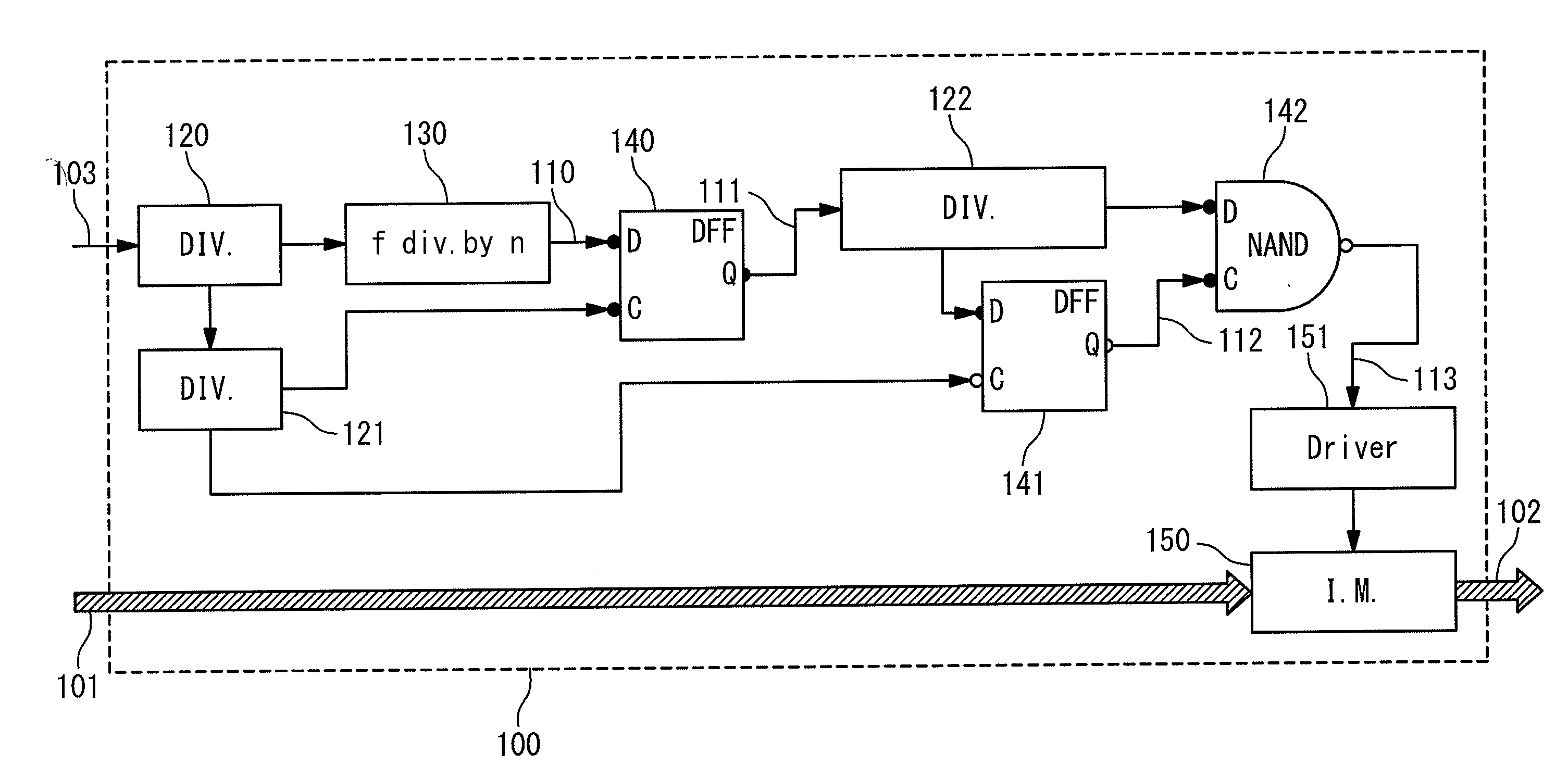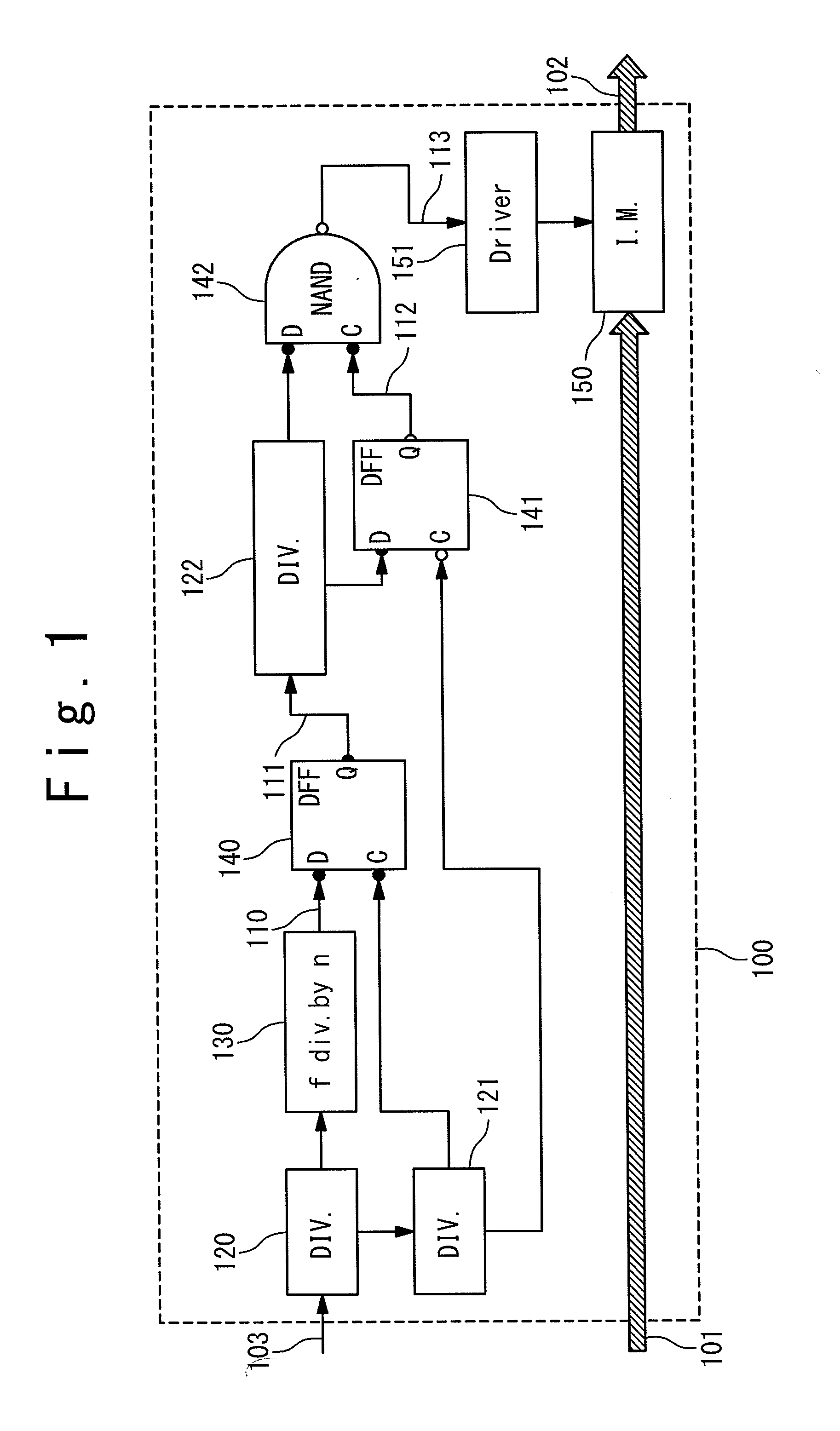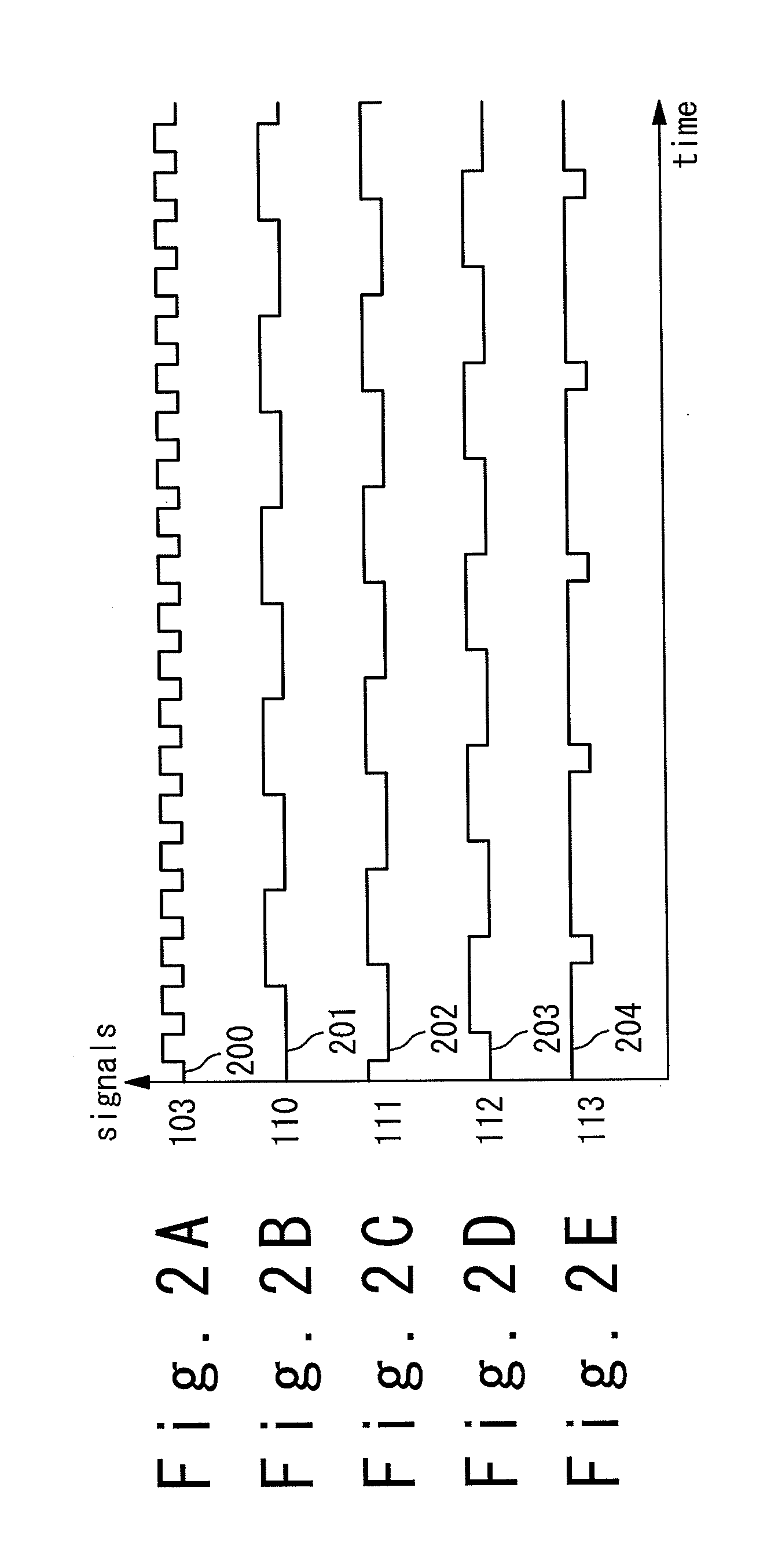Method of and system for detecting skew between parallel signals
a parallel signal and detection method technology, applied in the field of parallel communication, can solve the problems of time difference between transmissions on multiplexed polarizations, transmission errors, transmission errors, etc., and achieve the effect of simple receiver structure and simple encoder structur
- Summary
- Abstract
- Description
- Claims
- Application Information
AI Technical Summary
Benefits of technology
Problems solved by technology
Method used
Image
Examples
Embodiment Construction
[0054]FIG. 1 is a block diagram schematically showing a configuration of an apparatus, which can be used in order to imprint a dip on the optical amplitude of a light signal. Before explaining in detail the apparatus of FIG. 1, the Pseudo-Return-to-Zero format of index n (P-RZ(n)) is defined in analogy to Return-to-Zero (RZ) and Non-Return-to-Zero (NRZ) formats. In RZ format, the optical amplitude returns to zero between two consecutive symbols. In NRZ format, the optical amplitude does not return to zero between consecutive symbols, and it is forced to zero if and only if the symbol amplitude is zero or crosses zero. In P-RZ(n) format, the amplitude returns to zero between consecutive symbols every n symbols and does not return to zero in the other cases, unless the symbol amplitude is zero or crosses zero. P-RZ(n) format is not a RZ format of at an n time slower clock frequency, as the amplitude is forced to zero and is relaxed at a very steep slope (same slope as RZ). P-RZ(n) cau...
PUM
 Login to View More
Login to View More Abstract
Description
Claims
Application Information
 Login to View More
Login to View More - R&D
- Intellectual Property
- Life Sciences
- Materials
- Tech Scout
- Unparalleled Data Quality
- Higher Quality Content
- 60% Fewer Hallucinations
Browse by: Latest US Patents, China's latest patents, Technical Efficacy Thesaurus, Application Domain, Technology Topic, Popular Technical Reports.
© 2025 PatSnap. All rights reserved.Legal|Privacy policy|Modern Slavery Act Transparency Statement|Sitemap|About US| Contact US: help@patsnap.com



